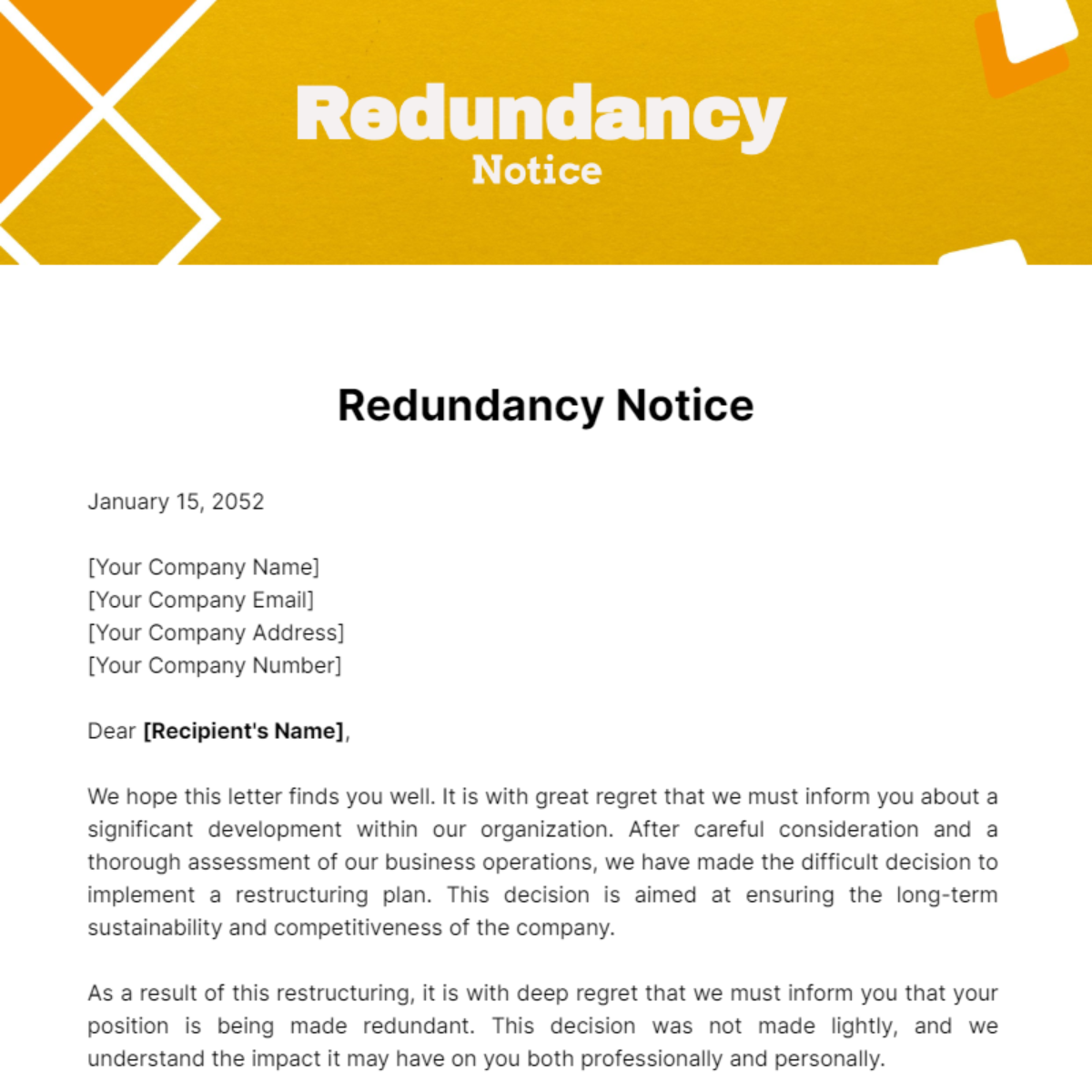Who Pays Redundancy Money? A Detailed Guide for Employers and Employees
Who Pays Redundancy Money? A Detailed Guide for Employers and Employees
Blog Article
Investigating the Interplay In Between Company Redundancy and Organizational Flexibility for Future Growth
In the dynamic landscape of today's company world, the elaborate partnership in between business redundancy and business versatility becomes an important aspect for continual growth and success. Business often deal with the challenge of striking a delicate equilibrium in between preserving a level of redundancy to minimize dangers and cultivating adaptability to react promptly to the ever-evolving market demands. This fragile interaction holds the vital to not just enduring in stormy times but likewise prospering despite unpredictability. As we explore the multifaceted dimensions of this interplay, fascinating understandings into exactly how companies navigate these complexities to lead the way for future development await.
Relevance of Firm Redundancy
Company redundancy is an essential element that improves organizational durability and minimizes operational risks. By integrating redundancy steps within the business framework, companies can much better endure unexpected disruptions and variations in business setting. Redundancy acts as a tactical barrier, permitting business to adapt and react properly to unforeseen challenges without endangering crucial procedures.
One trick element of the significance of firm redundancy is its function in making sure connection throughout times of dilemma. When encountered with abrupt changes or emergencies, repetitive systems, resources, or employees can action in to maintain crucial features and stop extensive disturbances. This continuity not only safeguards the firm's credibility and consumer count on but additionally lessens financial losses and functional downtime.

Techniques for Business Adaptability

An additional crucial method is buying modern technology and infrastructure that can support adaptability and scalability. Executing electronic devices, automation, and data analytics can simplify operations, enhance efficiency, and offer useful insights for informed decision-making. Moreover, developing versatile business structures that enable for quick modifications to market characteristics and customer demands is vital for remaining affordable in a rapidly advancing environment. By proactively determining potential interruptions and opportunities, companies can proactively grow and adapt in an ever-changing business landscape.
Balancing Redundancy and Adaptability
Accomplishing a harmonious equilibrium between functional redundancy and organizational versatility is vital in browsing the complexities of a vibrant organization atmosphere. Redundancy within a business gives a safety and security net, making certain continuity and stability in procedures. Nonetheless, an unwanted of redundancy can result in inefficiencies and prevent adaptability to changing market conditions. On the various other hand, organizational versatility enables firms to respond immediately to exterior interruptions and confiscate new opportunities. Striking the right equilibrium in between redundancy and flexibility is a delicate process that calls for a deep understanding of the company's objectives, industry characteristics, and threat tolerance.
To achieve this equilibrium, firms need to carry out regular assessments of their operations to identify locations where redundancy is essential for danger reduction and where versatility can drive technology and development. Carrying out versatile structures, promoting a culture of continuous understanding and improvement, and encouraging open interaction throughout all degrees of the company are essential approaches to integrate redundancy and flexibility properly. By lining up these two critical elements, companies can position themselves for lasting development and success in an ever-changing service landscape.
Situation Researches on Adaptation Success
In analyzing circumstances of successful organizational adaptation, it becomes noticeable that the interaction in between functional redundancy and flexibility is a defining consider forming durable companies. One engaging study is that of Netflix. At first a DVD rental service, Netflix showed exceptional versatility by transitioning check my blog right into a streaming system when digitalization interfered with the industry. By tactically investing in innovation and content development, Netflix not just survived yet grew in a swiftly developing market. Another standout example is Amazon. Starting as an on-line bookstore, Amazon continuously adapted its organization model, increasing into diverse fields such as cloud computing and expert system. This adaptability enabled Amazon to stay in advance of competitors and fulfill changing consumer needs. Lastly, Adobe provides a significant picture of successful adjustment. The business changed from selling software program licenses to a subscription-based model, guaranteeing repeating revenue streams and boosted client interaction. These instance studies emphasize the significance of functional redundancy paired with this article business adaptability in fostering lasting development and competition.
Structure Strength for Future Development
Structure resilience for future growth requires a calculated positioning of operational processes with market dynamics and emerging trends. Business need to adapt to altering environments by fostering a culture of adaptability, innovation, and continual improvement.
Furthermore, fostering strong relationships with stakeholders, such as customers, staff members, suppliers, and the neighborhood, is vital for weathering unpredictabilities and maintaining count on and support throughout unstable times. Effective interaction and openness play an important duty in building durability, as they help line up assumptions and facilitate cooperation in navigating unpredictabilities.
Furthermore, companies need to prioritize knowing and growth campaigns to upskill staff members and furnish them with the necessary tools to adjust to transforming situations. By buying their labor force, business can improve their versatility and agility, ultimately strengthening their strength for lasting future development.
Conclusion

In the dynamic landscape of today's Extra resources organization world, the detailed connection between company redundancy and organizational flexibility arises as a vital variable for sustained development and success. Companies commonly face the challenge of striking a delicate balance in between preserving a level of redundancy to alleviate dangers and cultivating flexibility to react quickly to the ever-evolving market needs.To attain this balance, business require to carry out regular evaluations of their procedures to recognize areas where redundancy is needed for threat mitigation and where flexibility can drive innovation and growth.In conclusion, the interaction in between company redundancy and business flexibility is important for future development. Structure resilience via a combination of redundancy and flexibility will certainly guarantee that companies are prepared for the challenges of the future.
Report this page